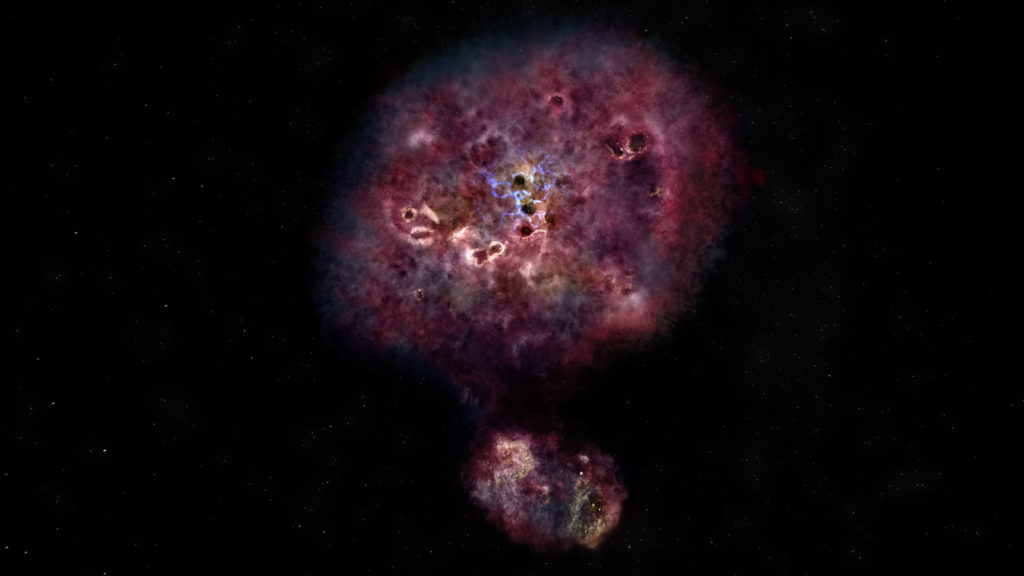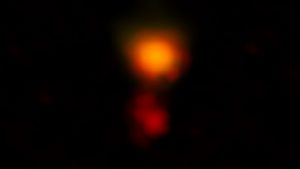Astronomers discover a giant star-forming galaxy from the childhood of the universe
An international research team has discovered a distant, dusty, and very star-forming galaxy 13 billion light-years away. That makes the galaxy the farthest known of its kind. Behind the discovery are, among others, researchers from the DNRF’s Cosmic Dawn Center (DAWN) at the University of Copenhagen and DTU Space. The study was recently published in the Astrophysical Journal.

The distance to a giant galaxy made up of dust, gas, and a large number of stars has now been finally established by an international research team, with the participation of researchers from the DNRF he Cosmic Dawn Center (DAWN), which is located at the University of Copenhagen’s Niels Bohr Institute and DTU Space.
The galaxy – called Mambo-9 – has actually been known for 10 years, but it is only now that a research team has been able to measure its distance to Earth and thus determine that the galaxy is 13 billion light-years away from Earth. This makes it the farthest so-called dusty galaxy that we know of.

“Dusty galaxies produce large numbers of stars and play an important role in the shaping of our universe. However, because dust interferes with light emanating from them, they are impossible to see with regular telescopes,” said Sinclaire Manning, a doctoral student writing her dissertation about the study and guest researcher at DAWN.
Using the advanced ALMA telescope, scientists have now succeeded in accurately measuring Mambo-9, thus establishing the distance to Earth. Dusty star-forming galaxies form stars at a rate of up to a few thousand times the mass of the sun a year. In comparison, the star-forming speed of our own galaxy – the Milky Way – is only about three solar masses a year.
The fact that the galaxy is 13 billion light-years away also means that the images available to the researchers are 13 billion years old that is the amount of time it has taken the light to travel from Mambo-9 to Earth, where it can be observed by the telescopes. Thus, with the telescopes, scientists look back in time and get a picture of what the galaxy looked like 13 billion years ago. As the age of the universe is estimated to be 13.8 billion years, the image of Mambo-9 therefore shows a galaxy from the universe’s childhood, and the discovery surprised the research team.
“That we have been able to observe this type of galaxy, so near the Big Bang, is a fantastic achievement. We are surprised that a 13-billion-year-old galaxy is so large and massive so shortly after the Big Bang. Because how could a galaxy get so big in such a short time?” reflected astrophysicist Georgios Magdis, an associate professor at the Niels Bohr Institute and DTU Space.
Read more about the study and the ALMA telescopes via the University of Copenhagen here
More information can be found via the ALMA Telescope website here
The scientific article can be found at the Astrophysical Journal here
